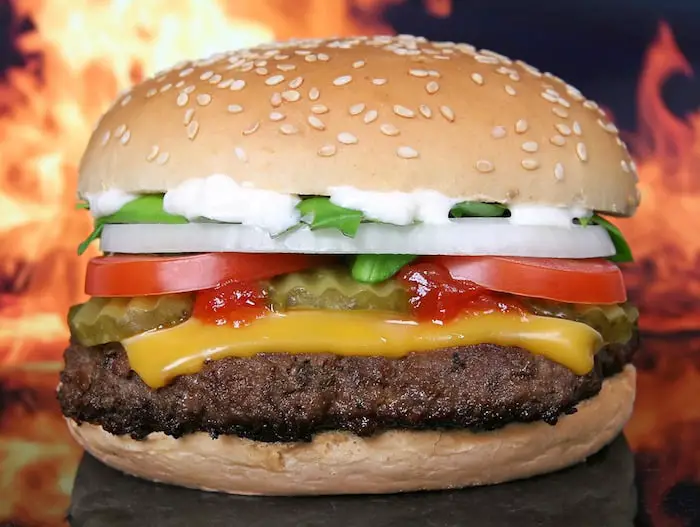
If you placed a large juicy burger on the grill hoping to enjoy a delicious summer treat but they turned into half size of the bun, then you are not alone. Everyone wants a large and juicy hamburger that does not shrink on the grill and fits well inside the bun, and we have a solution to save your frustration.
So, how to keep burgers from shrinking on the grills? Use lean meat with no water, salt, and less fat for making patties because the fat will ultimately melt and drain away leaving a small and dry patty. Secondly, make a small dimple mark in the middle by pressing with your finger and cook at low temperature.
In general, beef, fish, and poultry meat shrink nearly 25 percent of their original weight when cooked. The percentage of shrinkage depends on the moisture content, fat content, and the temperature at which meat is grilled. Fortunately, with a few hacks, you can keep the burgers from shrinking on the grill.
In this post, we will talk about the things you can do to ensure that you get a large and succulent burger that matches the bun size, and other mistakes to avoid. Read on to find out more.
Avoid The Additives
When buying ground meat for making burger patties, always bear in mind to choose meat that does not contain any additives. As meat is usually sold by weight, the grocery stores tend to add salt and water to the ground chicken, beef, or turkey to get more profits.
When the meat is cooked, water evaporates and this causes the burger to shrink considerably in size. Look for sources that claim that they do not add salt or water to ground meat, and you will notice a big difference in your burger.
You can season the burger with salt and pepper after forming meat patties to prevent the loss of too much moisture content as the meat cooks.
Balancing Out The Fat Content
If you choose denser and leaner cuts of the meat with less fat, this will ensure that the meat does not shrink a lot when kept on the grill. As ground meat contains high-fat content, the fat melts in high temperature and drains away leaving behind a small size patty than you imagined.
However, you need to make sure that you don’t overdo the lean meat because after all you are making burgers and you want them to be juicy and succulent. If you use meat that’s too lean, it will result in a dry and crumbly burger that lacks both texture and flavor.
To get a juicy and flavorful burger without too much shrinkage, we suggest that you use ground beef containing just the right amount of fat content. This is not only important for adding flavor but also to bind the patty together. The ideal ratio would be 80% lean meat and 20% fat.
Cooking Temperature
The temperature of your grill also has a direct influence on the food being prepared. As per the rule of thumb, a higher cooking temperature implies a higher shrinkage level. So, we suggest you maintain a moderate temperature when cooking your burger.
Maintaining a moderate temperature not only reduces shrinkage but also helps in retaining the juicy flavors of meat. Shrinkage takes place slowly throughout the cooking process, hence the medium cooked patties will have a larger size than the similar-sized patties that are cooked at high heat.
If you close the lid while cooking on the grill, the burger may achieve a high temperature pretty quickly. The reason why the burger prepared in your favorite restaurant tastes so great is that they are cooked on an open flame.
Size and Shape Of Patties
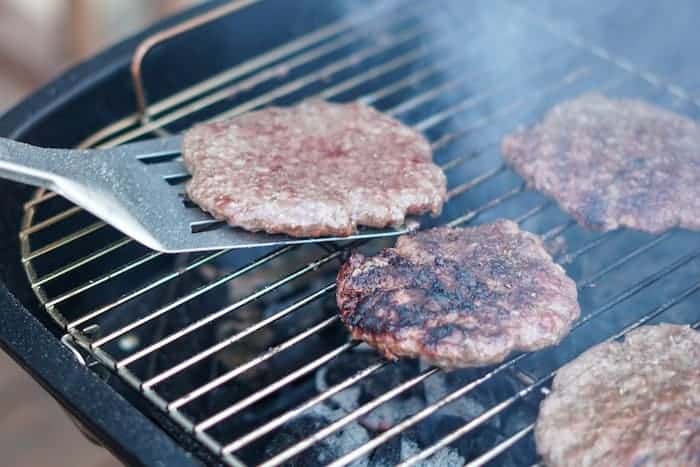
When forming the shape of patties, make them flat and give a small dimple at the center to make them look bigger in size. If you have been making patties of the same size as you want the final product to look like then you are doing it wrong all this while.
The size of the patty should be wider than you actually want them to be when they are ready, and remember to make a dimple (not a hole) in the center to ensure even cooking. When you make perfect patties like this, the burger will fit into the bun perfectly.
Step-by-Step Burger Making
First off, get the grill cleaned, and if using a gas grill, preheat it to at least 450 degrees Fahrenheit. If you are using charcoal get the coals nice and hot and evenly covered with white ash. You can then make the burgers while the grill is preheating.
- Gather all the ingredients you need to start making a burger. Regardless of the type of meat you choose, ground buffalo, ground chicken or beef, make sure you maintain a 80/20 ratio to meat and fat content. (Too high-fat content will not only shrink burger size but also cause flare-ups).
- Next, take a handful of ground meat, approximately the size of a tennis ball and mold it into a ball shape. Flatten out the meat in the size of a saucer, nearly 5 to 6 inches wide and 1/4 inch thick. Press the flattened ball in the center to create a depression, not a hole.
- Put the burger patty on a baking tray and continue making the patties until you have arranged them all on the tray. Now, season the burgers with a homemade seasoned salt mixture including black pepper powder, onion powder, garlic powder, and paprika.
- To season the meat perfectly and distribute evenly, take the seasoning mixture in your hands and sprinkle over the meat from at least 8 to 10 inches. Allow the burgers to rest for sometime after being seasoned to let the meat to settle before you place them on the grill.
- When the grill gets hot, put the burger on it and remember to not close the lid to avoid shrinking. Instead, cook it over an open flame on medium heat until the edges start to become brown. Don’t flip them at this point if you want to get those gorgeous grill marks on your burger.
- When the brown marks on the edges deepen, turn the burger but be careful while flipping. The juices have been accumulating at the top and turning will cause flare-ups but only for a brief period. Keep a spray bottle filled with water handy to cool down the flames. Also, make sure you don’t close the lid.
- Cook the other side to your preference. Don’t press them with a spatula as this will drain out the goodness from the patties. You may choose to add some ground veggies such as carrots or zucchini to the meat or add cooked lentils or mushrooms to enjoy an alternative flavor but these burgers take longer to cook.
Tips To Make Perfect Burgers At Home
If you have sights set on a juicy and tender burger, make sure the end result is just like what you envisioned. Burgers are summertime staple but little mistakes that destroy your succulent treat, so here are a few tips to help you make perfect burgers at home.
1. First things first – the right meat
To make juicy burgers, make sure you get ground chuck with a fat content of 18-20 percent. Lean meat is good, but it should be balanced with the right amount of fat. Too lean meat can turn your patties dry and brittle.
We recommend using the freshly ground meat because the tender it is, the more flavorful your burgers will be. If a store has onsite butchers then request them to grind the meat fresh for you. For the freshest variety, you will need to grind yourself.
To do this, buy the right size of meat and grind it at home in a food processor or grinder. To get the best quality grind, you may cut the meat into chunks, keep it inside the freezer for about 15 minutes and then pulse finely using a coarse grind disk.
2. Making Burger Patties With Wet Hands
This is a small but very useful tip to avoid the mess and ensure that the work gets done faster. Moistening your hands with a little water at the beginning will prevent the meat from sticking to your hands. This will also allow the meat to form shapes quickly and not get overly-handled.
3. Never Overwork Ground Meat
When making perfect burger patties, remember to never overwork the ground meat using your hands. If you handle the meat too much, this will result in a hard and dry burger. We suggest two methods of making meat patties.
First method includes pulling the meat apart into small chunks, adding seasonings, and tossing them with your fingers spread apart until loosely mixed. The second method is to take tennis ball size meat, flattening them loosely and then sprinkling seasonings over it.
4. A Dimple in the Center
We have already mentioned the benefits of making a dimple in the center. To be precise, the patties should have about 3/4-inch thickness at the edges and 1/2-inches thickness in the center. Don’t worry about the shape getting distorted because the burgers tend to shrink and pull inwards as they cook. Hence, the dimple will eventually even out resulting in a well-made patty burger.
5. Cool The burgers Slightly Before Putting On The Grill
Other types of meat cook better if they are brought to room temperature before going on the grill. However, the patties must be cold if you want them to stay together and juicy. To do so, keep the patties on a platter or tray covered, and put inside the fridge for some time while the grill gets ready.
If the fat content in the burger is in room temperature, they are likely to drain out faster. However, if the burgers are cooled, the fat will take time to melt and drain, hence you can retain more of the flavor-carrying fat to get juicy patties.
6. Always Use a Clean Cooking Grate
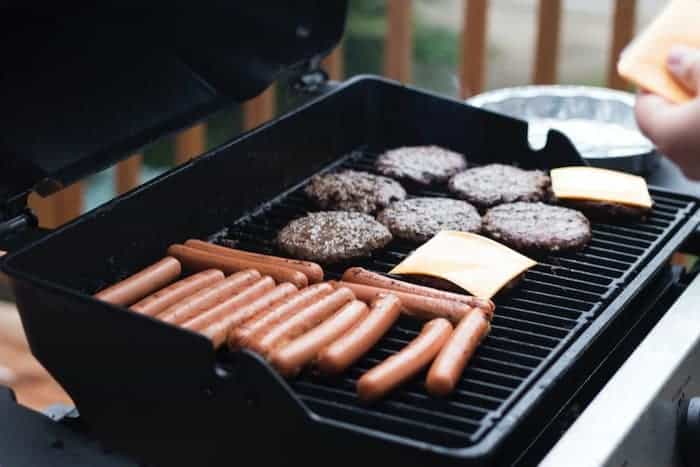
I suggest placing patties on a grill grate instead of directly putting them on the grills. If there are bits of debris on the grate, this can result in sticking. Other common mistakes to avoid are using an un-oiled surface for cooking and very low temperature. You would want the burgers to sizzle up immediately, become firms and be released from the grill.
7. Use a Hot Grill
To get perfect burgers, make sure that the grills are on a steady high heat. Hold your hand about 1-2 inches over the grill level for 2 to 3 seconds. If you are using charcoal grills, you will want ash-covered coals to generate even heat.
8. Flip the Burgers Only Once When Grilling
Beginners and amateurs often think that flipping the burger repeatedly will ensure even cooking and give great end results, however, this is not true. If you flip the patties too soon, the burgers tend to stick together. Cook for at least 2 mins both sides for rare grilling, 3-mins both sides for medium-rare, and 4-mins for medium and 5-mins to ensure that it’s well done.
9. Spare That Burger, Don’t Press It
This is another common mistake you must avoid while grilling a burger. They have not done any harm to you, so why subject them to torture with your spatula. It’s heart-rendering to watch people press down each burger so cruelly and as they do, juices start oozing out of the patties.
This practice not only deprives your burger of all that delicious juices and moisture but also results in flare-ups. So, just let the burgers be and cook perfectly in their natural juices.
10. Allow some resting time to the burgers
After you are done with the cooking process, allow some resting time for the burgers. Similar to other types of meat, resting allows the juices that have collected at the surface to distribute evenly throughout the patties and allow maximum juiciness. As burgers are comparatively smaller to the giant roasts, only about 10 minutes is enough.
11. Making very small and petite patties
As the patties sizzle on the grill, the ground meat will shrink in size and this depends on the fat content. To avoid getting pint-sized results and to ensure that it fits well, make patties slightly larger than the size of buns. Too big size will char the outer skin before it cooks well inside, and too thin means the patty will lose all moisture and become dry.
Common Mistakes That Lead To Burgers Falling Apart
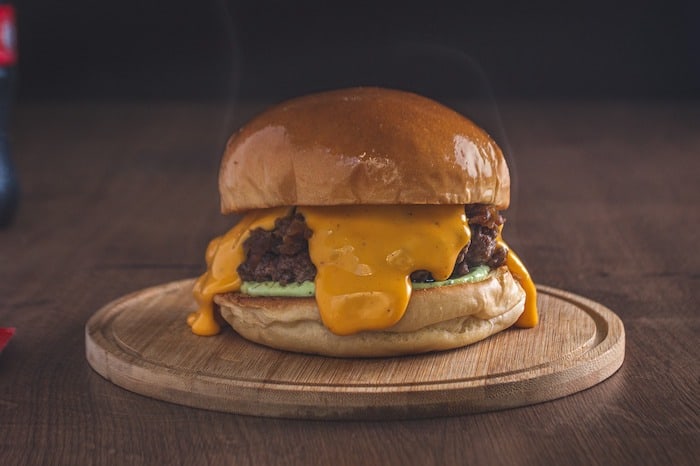
Now that you know how to keep burgers from shrinking on the grills, another common issue while making hamburgers is to ensure that they hold together well. So, let’s take a quick look at the common mistakes that can make patties fall apart and how to avoid them:
- Putting warm or room temperature patties on the grill is a strict no. If you have not kept the burgers in the refrigerator prior to hitting the grills, this will cause them to crumble and fall apart. To prevent this, you may consider adding breadcrumbs or an egg yolk to the mixture to hold them together.
- Playing too much with the patties with your spatula may make it fall apart. So, avoid too much flipping or jostling with the patties. Just let it sit calmly and get cooked over medium flame.
- Not letting the grills heat enough is a common mistake that should be avoided. A quick and easy trick is to hold your hand about 4 inches above the grill and if you can keep it like that for 4 to 5 seconds, the heat is medium.
- Not keeping a timer can result in poor burgers. So, we suggest that you get a good quality instant thermometer. It will not only make you feel like a professional burger maker but also ensure that the meat is cooked to perfection.
Related Questions
What is the right time for seasoning?
Adding salt and seasonings is a small step but it can make or break the taste. It is essential to season the meat just before grilling in order to get a delicious burger. This not only gives you a flavorful and well-textured burger but also helps in creating a loose patty that’s properly seasoned.
Why do some people add ice cubes to patties?
Just like burgers shrinking in size, getting dry and crumbly is also a major problem that must be avoided. To fix this, some people place a small ice cube over the patty. When kept on the hot grill, the ice melts and distributes moisture throughout the patties, making them juicy and delicious.
Should you thaw frozen burger patties?
The popularity of hamburgers has made the frozen patties a hot selling item at the supermarkets. However, don’t add the frozen burger directly to a hot grill. Instead, thaw them slightly to defrost the meat before you put them to sizzle on the grill. Thawed patties will cook evenly and result in juicy burgers.
How long can cooked hamburgers last at room temperature?
Cooked hamburgers can be kept at room temperature for two hours or just one hour if the temperature outside is over 90 degrees Fahrenheit. If the burger has been sitting outside for more than 2 hours, they should be discarded to avoid any foodborne disease. In the refrigerator, it can stay good for 3-4 days and if you keep them inside a zip lock bag inside the freezer, they can last for 2-3 months.
Can I reheat a burger?
If you prefer your burger to be warm, you can easily reheat it in a toaster oven. First, preheat the oven to 350 to 400 degrees F and then place the burgers on a metal rack. Keep a baking sheet underneath the rack to avoid any drips. You may also reheat the burger in a microwave oven.
See Also:
How To Grill Frozen Burgers? Read This First!
Green Mountain Grills Vs Traeger: Which Is Better
How Often Should You Clean A Grill?
10 Tips for Grilling at Night ( in the Dark)
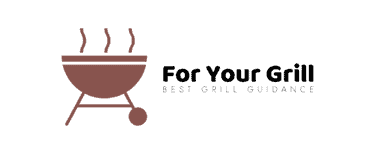
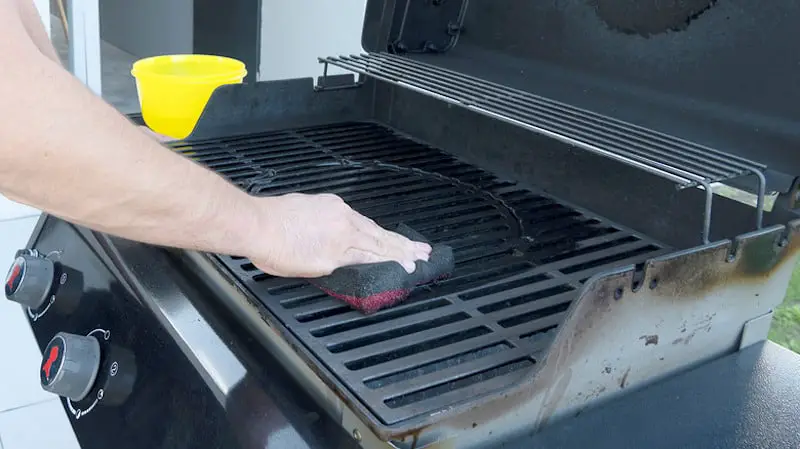
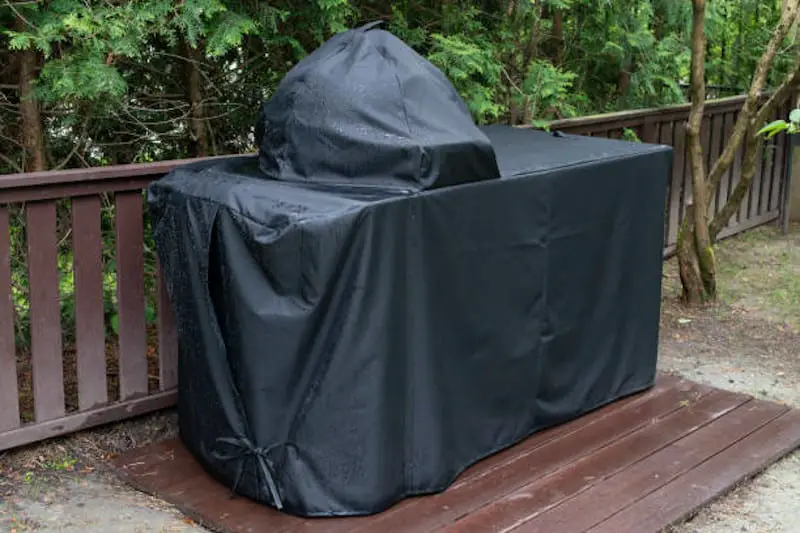
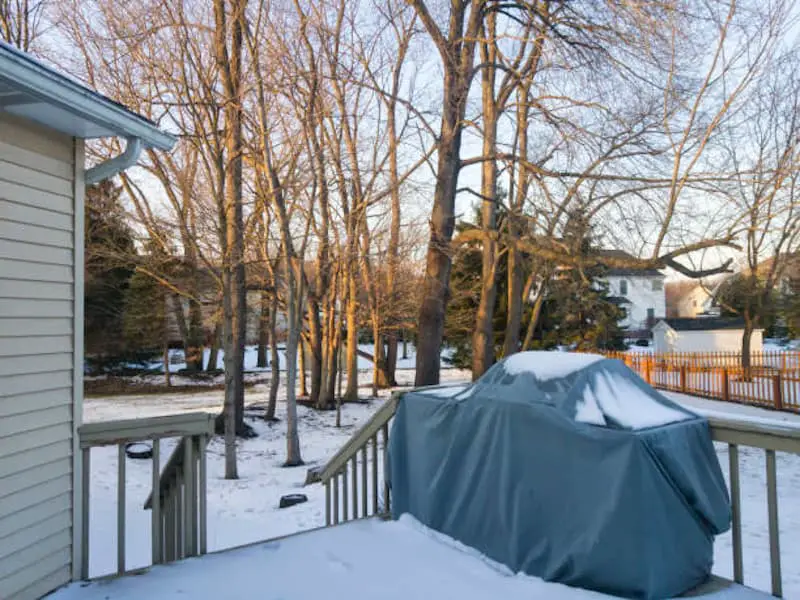
Leave a Reply